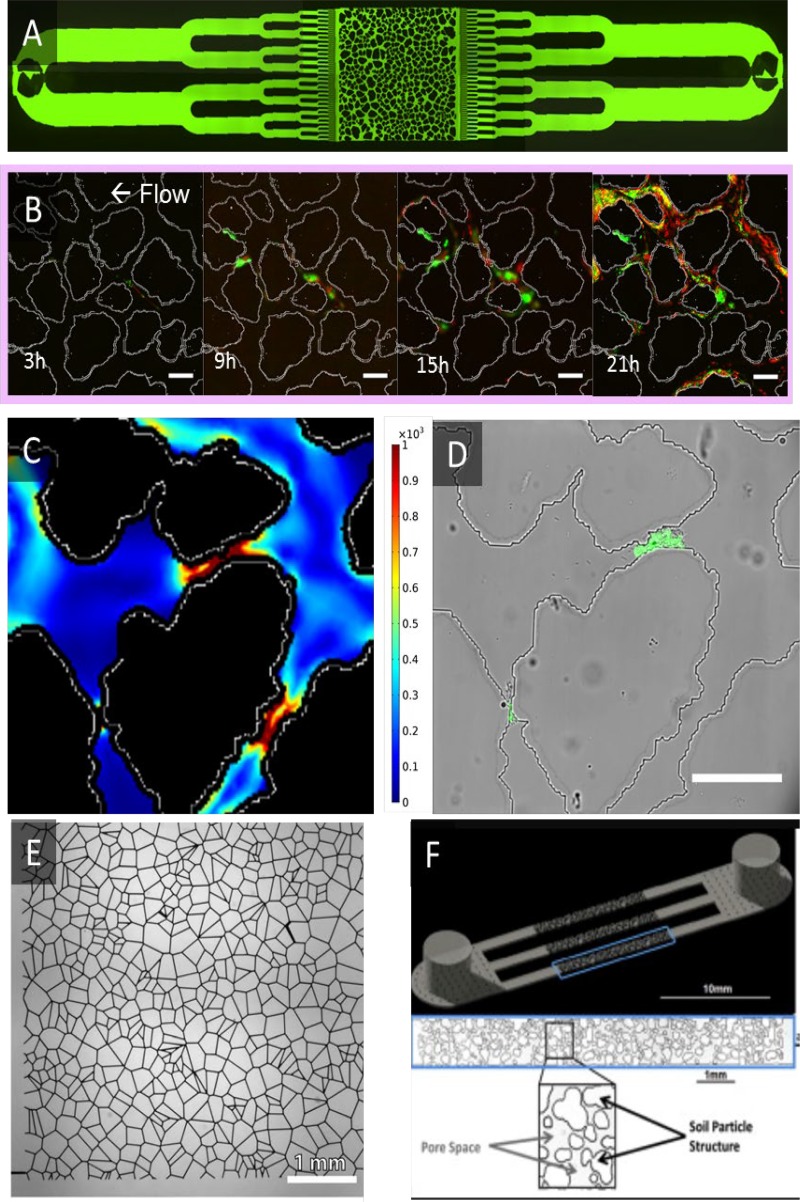FIG 3.
Microfluidic approaches can recreate soil features for lab-based studies. (A) A heterogeneous porous medium design replicates the natural shape and distribution of sand particles. (B) Within these pore spaces, bacteria grow (green) and decay (red) under the influence of pressure-driven flow (scale bar = 100 μm). (C) A consistent particle layout between replicates allows the pore space hydrodynamics to be computationally simulated. (D) This system showed that a soil bacteria initially clogs pores with high shear rates (scale bar = 100 μm). (E) A random pore network generated from Voronoi tessellations was used to study two-phase flow underground. (F) A microfluidic design created by a particle-generating algorithm was used to study the influence of microbial extracellular polysaccharides on pore space water retention. For more information regarding the associated techniques, see references 124 (A to D), 125 (E), and 126 (F).

